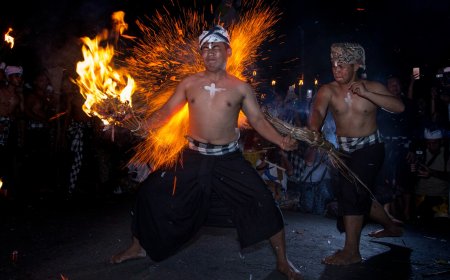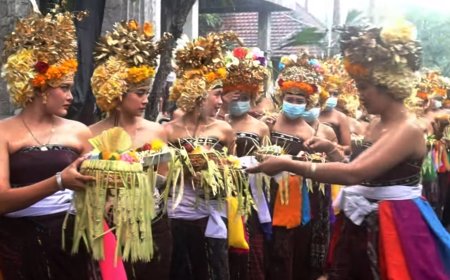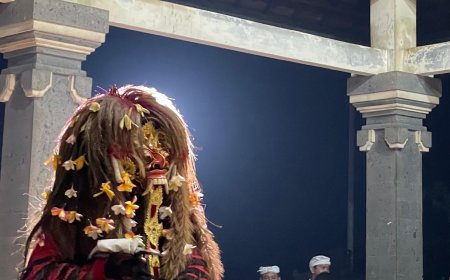Siat Sambuk: A Generation to Generation "Fire War" Tradition to Ward off Evil Spirits Before Nyepi
The Siat Sambuk tradition, a war using burnt coconut fibre, is a unique tradition that has been carried out for generations by the residents of Banjar Pohgending, Pitra Village, Penebel District, Tabanan Regency, Bali, before the Nyepi Day. The purpose of this tradition is to "Nyomya Bhuta Kala" or to ward off evil spirits in the environment around the village.
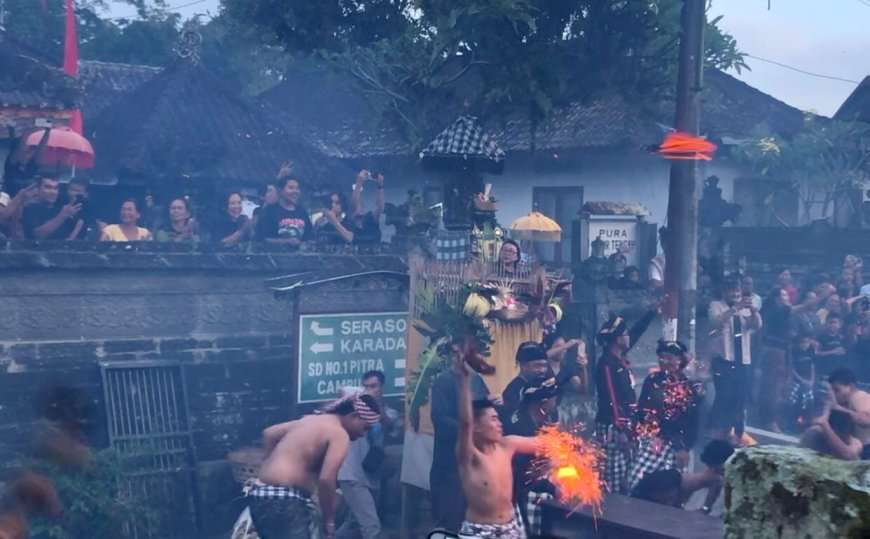
The day before Nyepi or better known as Pengerupukan Day, Balinese people usually celebrate this day with an ogoh-ogoh parade. However, the residents of Banjar Pohgending, Pitra Village, Penebel District, Tabanan Regency, have a unique tradition that has been carried out from generation to generation to welcome the Nyepi Day. This tradition is widely known as "Siat Sambuk".
The series of Pengerupukan Day in Banjar Pohgending begins with the usual ogoh-ogoh parade. As the day goes towards evening or the sandikala, residents gather in droves around the hall to witness the Siat Sambuk tradition.
Siat Sambuk, which literally means “a war using coconut fibre as a weapon”, is a tradition passed down from generation to generation which is carried out once a year on Pengerupukan Day. The Siat Sambuk tradition is usually carried out by young people from Banjar Pohgending, with the aim of repelling reinforcements (Nyomya Bhuta Kala) and dispelling negative things in the environment around the village.
Siat Sambuk has its roots in the "mabuu-buu" tradition, which is a tradition of circling the yard of the house carrying a torch or burning coconut leaves (danyuh). The aim of this tradition is the same as the Siat Sambuk tradition, to ward off reinforcements and neutralize negative things around the village.
Participants in the Siat Sambuk tradition were youths from Banjar Pohgending who were divided into two groups. Previously, the two groups were known as “Wong Kaja” and “Wong Kelod”. In Banjar Pohgending, there is a junction road which is used as an imaginary separator from Banjar Petung. Residents whose homes are located to the north of the road are members of the Wong Kaja group. Meanwhile, residents whose homes are located to the south are members of the Wong Kelod group. Meanwhile, residents whose houses are located in the middle or right in the direction of the T-junction Road are given the freedom to choose to join the Wong Kaja or Wong Kelod groups.
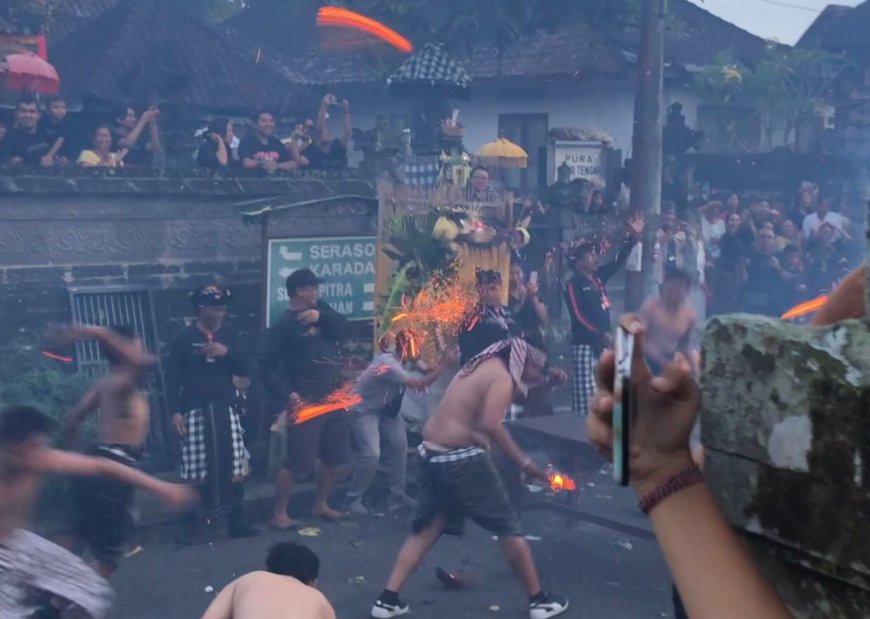
The Male Youth of Banjar Pohgending in Following the Siat Sambuk Tradition (Image Source: Editorial Collection)
Just like its name, the main tool used in Siat Sambuk is burnt coconut fibre. Siat Sambuk participants only use “kamben kancut” and do not use a single piece of cloth to protect their upper body. The area of both groups is only limited by a small table. Before the tradition begins, the participants first perform “nunas tirta” and pray together. When the village chief gave the signal, it meant that the Siat Sambuk tradition had begun and both groups started the battle by throwing burnt coconut husks at each other.
Siat Sambuk was held accompanied by Gamelan Bale Ganjur who also fired up the enthusiasm of the participants to throw the burnt coconut fibre towards the opposing group and try to avoid the coconut fibre thrown by the opponent. The cheers of the residents who encouraged the participants also added to the excitement of the Siat Sambuk implementation.
Previously, Siat Sambuk was held without being supervised by the Pecalang (village security group) so that there was no one to intervene if things started to get chaotic. In fact, when one group has no coconut husks to throw, they will use stones to attack their opponents.
Often, participants were injured by throwing stones. However, this did not stop the enthusiasm of the participants to continue this tradition. Siat Sambuk ends when one of the groups begins to get tired and is unable to continue fighting.
Even though it has been passed down from generation to generation, it turns out that the Siat Sambuk tradition was suspended for several years and was only replaced with a torch relay accompanied by kulkul beating. This apparently made the Pengerupukan celebration less meaningful and felt like something was missing.
Therefore, the elders of Banjar Pohgending held a meeting to propose that the Siat Sambuk tradition be revived but by bringing the concept of modern warfare to make it more relevant to current situation. Until finally, in 1995 the Siat Sambuk tradition was held again. However, the implementation of Siat Sambuk that year faced some problems. This obstacle was caused by an imbalance in the number of participants between the Wong Kaja and Wong Kelod groups. For this reason, this obstacle was overcome by eliminating the Wong Kaja and Wong Kelod groups. It is also history that for the first time the Siat Sambuk tradition was carried out without the Wong Kaja and Wong Kelod groups.
At that time, Siat Sambuk was carried out by joining all the participants and then dividing them equally into two groups. Apart from the change in the group division system, the implementation of Siat Sambuk is still the same as before. It's just that, there is Pecalang's involvement to regulate the course of the tradition and as a mediator to avoid chaos between the two groups. The concept of Siat Sambuk like this was then used continuously until today.
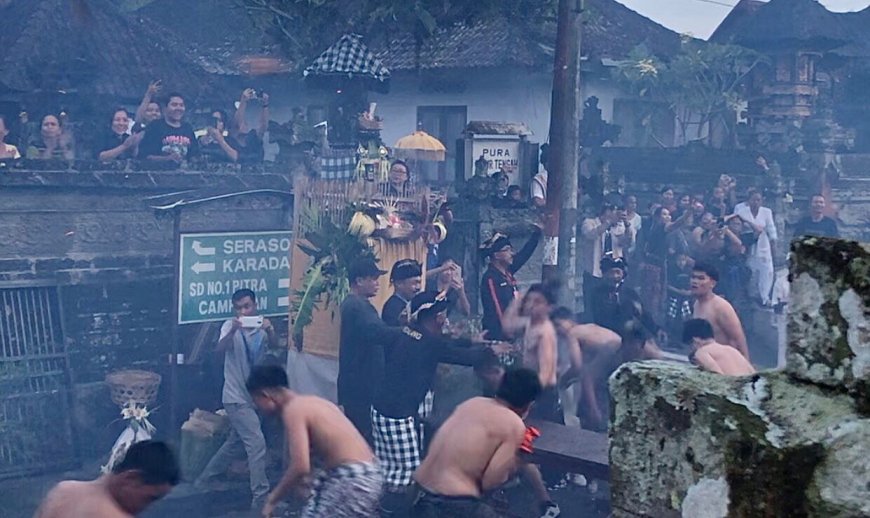
Pecalang's Involvement in Preventing Chaos (Image Source: Editorial Collection)
Even though the emotional tension between the participants is not as high as before, this does not reduce the main essence of carrying out the Siat Sambuk tradition. The screams of the audience, the accompaniment of Bale Ganjur, the enthusiasm of the participants to throw the coconut husk, and the tense atmosphere still bring some color to the the Siat Sambuk tradition in Banjar Pohgending.
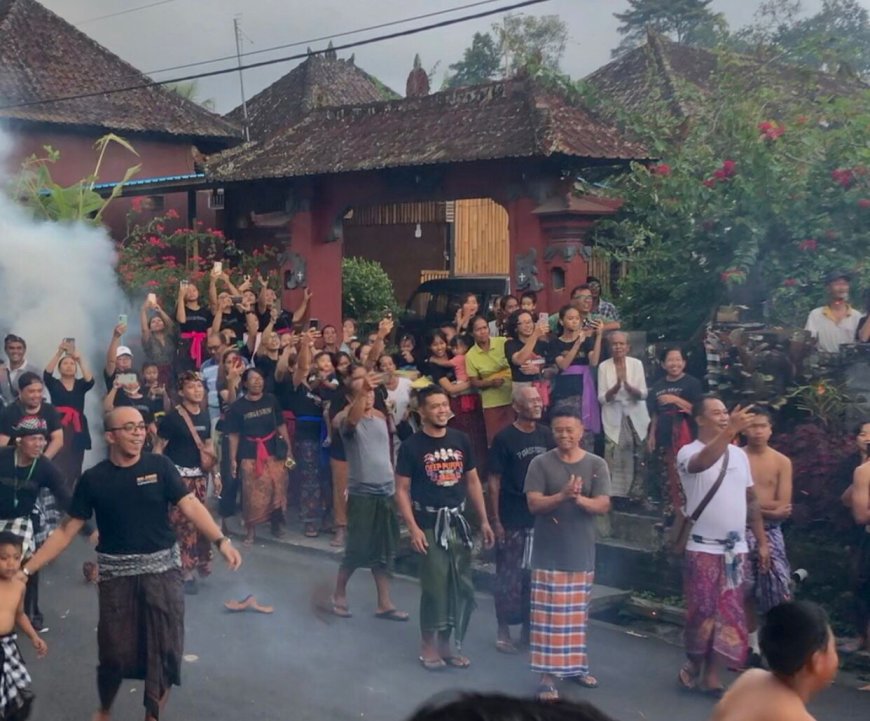
Even though they were filled with passionate emotions, when the Siat Sambuk was finished, all the participants gathered at the midpoint of the T-junction road to shake hands, embrace each other, and exchange laughter filled with satisfaction as if there were no new emotions or battles that had just finished. Another unique thing about this tradition is that, even though the participants' upper bodies are not covered by a single cloth, there have never been any reports of anyone being injured because of being hit by burning coconut husks.
As time goes by, it is possible that modifications will be made to keep the Siat Sambuk tradition relevant and sustainable along with the times. This modification can be done by adding a dance performance while waiting for the sandikala to arrive. This is done to maintain the existence of the Siat Sambuk tradition so that it can continue to be carried out by the next generation of Banjar Pohgending.


















































